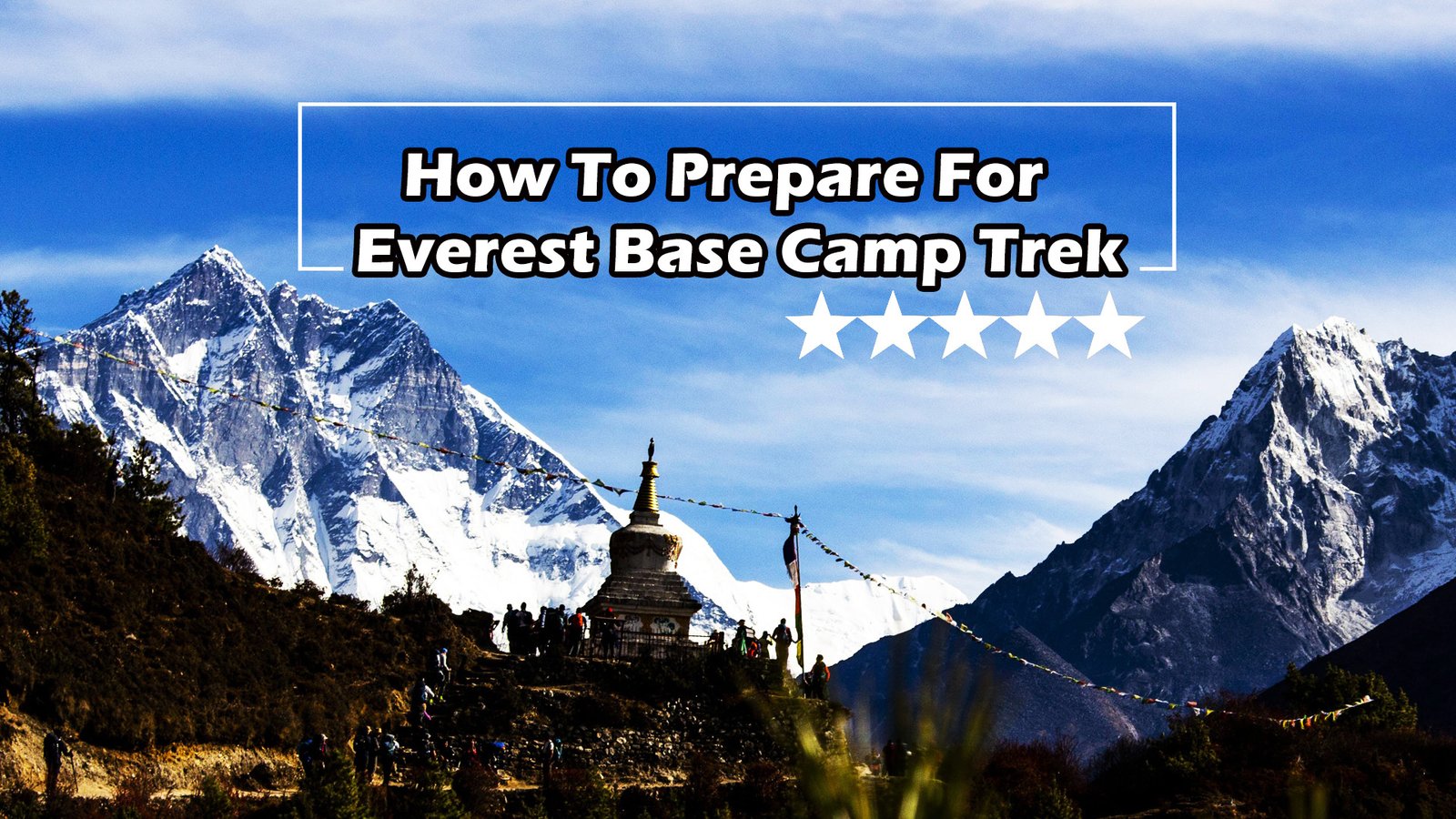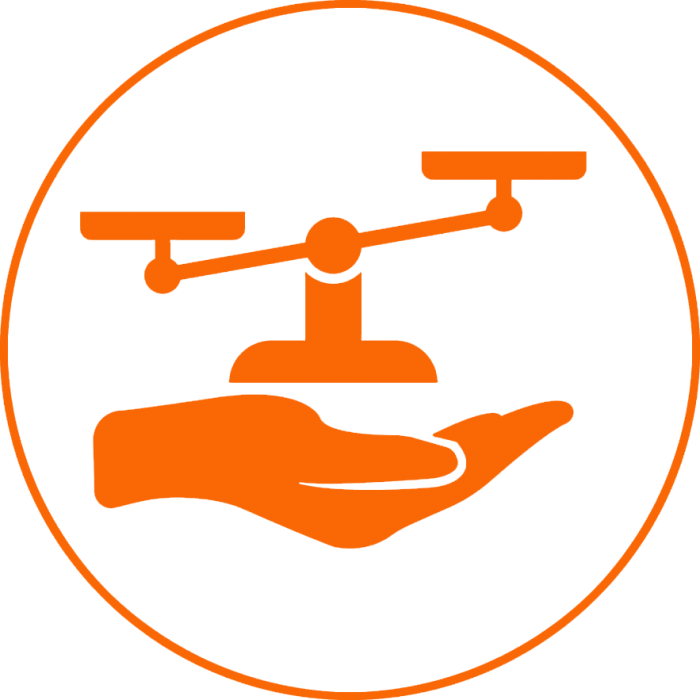How to prepare for Everest base camp trek

How to prepare for the Everest base camp trek?
Trekking to Everest Base Camp (EBC) is one of the world’s most famous and popular adventure experiences. Nestled in the stunning Himalayas of Nepal, this trek offers a unique blend of environmental grandeur, the country’s rich culture, and personal achievement. The Everest base camp trek is a meaningful and satisfying trip for people looking for a fantastic experience in one of the world’s most beautiful and remote places. However, this kind of work necessitates careful planning.
The EBC trek is a dream for many adventurers, but it is demanding, challenging, and requires careful preparation. Walking uphill and downhill for 14 days is a complex undertaking. It takes a lot of passion and desire to do so. Preparation for this daring endeavor is another matter. Anyone aspiring to embark on this exciting and adventurous journey must prepare for the Everest base camp trek. This blog provides the knowledge and advice you need to prepare for your Everest base trek. These are the most important things to consider when preparing for a trek to Everest Base Camp:
Understanding the Everest Base Camp Trek
Before starting the Everest Base Camp Trek, you must understand its intricacies to ensure a successful and enjoyable trek. Proper preparation enhances your ability to face physical and mental challenges, ensures your safety, and enriches the overall experience.
A trek to Everest Base Camp takes you to the foothills of Mount Everest, the world’s tallest mountain. Generally, this trek starts from Lukla, a small town in the Khumbu region. You can reach Lukla by a 45-minute flight from Kathmandu. The trek leads from Lukla through several Sherpa villages to the base camp at an altitude of 5,364 meters (17,598 feet).
Before reaching Everest Base Camp, the main stops are Phakding, Namche Bazar, Tengboche, Dingboche, Lobuche, and Gorak Shep. Namche Bazar and Dingboche are important acclimatization spots to avoid possible altitude sickness.
The trek usually takes 12 to 16 days, depending on the route and days of acclimatization. The pre-monsoon (March to May) and post-monsoon (September to November) seasons are ideal for trekking because the weather is mostly stable and the skies are clear.
Teahouses are well-known for food and accommodation while trekking. These teahouses are like basic lodges, providing simple food and sleeping accommodations. Amenities at higher elevations may be minimal, and hot showers and wi-fi are usually available for an additional fee. You can expect a variety of local and international dishes. Dal Bhat (lentil soup with rice) is a staple meal that provides adequate nutrition to trekkers.
Pick the best season.

While planning the Everest base camp trek, it is critical to consider the weather. If you trek in the off-season, you may face various difficulties. Monsoons (June to early September) and winters (late December to February) are off-seasons that can present many trekking challenges.
Monsoons bring significant rainfall, making trails slippery and prone to landslides that increase the risk of accidents. This period obscures the mountain view, diminishing the visual experience. Adverse weather often delays or cancels flights to Lukla, the starting point of the trek.
The winter season is also not suitable for Everest trekking due to the extreme cold. Temperatures can drop significantly during this time, especially at higher altitudes, making the trek physically demanding and uncomfortable. Snow can cover trails, posing navigation challenges and potentially blocking some passes.
So, choosing spring or autumn for the Everest base camp trek is important. Spring and autumn are Nepal’s most famous and suitable trekking seasons. The weather during these seasons is ideal, ensuring safe trail conditions and reducing the risk of snow, rain, or landslides.
Pleasant temperatures and manageable trekking conditions make your journey more enjoyable. Clear views and favorable weather enhance the overall experience, allowing you to fully appreciate the stunning Himalayan scenery.
Physical Preparation

Physical preparation is essential for the Everest Base Camp (EBC) trek. It ensures a safe, enjoyable, and successful trek. Here is a detailed guide on how to physically prepare:
-
Cardiovascular training
The trek involves long days of walking at high altitudes with low oxygen levels, so cardiovascular endurance is essential. To improve cardiovascular fitness, you can engage in activities like running, cycling, swimming, and walking.
Aim for 4-5 sessions per week, gradually increasing the duration and intensity of the activities. Start with 30-45 minutes of moderate activity and slowly build up to 1-2 hours of continuous effort. It is also a beneficial idea to include walking or running uphill on a treadmill at an incline to simulate trekking conditions.
-
Strength training
Strength training specifically helps strengthen the leg, core, and back muscles and aids in carrying gear and navigating uneven terrain. Focus on exercises like squats, lunges, step-ups, and calf raises. These exercises help build the strength needed for climbing and descending rocky routes.
Also, do exercises like planks, Russian twists, and leg raises to help stabilize the core, which is essential for balancing and carrying a backpack. Include exercises like push-ups, pull-ups, and rows to strengthen the upper body. These exercises help strengthen the upper body, helping to handle trekking poles and packs.
-
Endurance training
Building endurance enables you to trek at high altitudes for several hours daily without feeling fatigued. On weekends, incorporate long hikes with a weighted backpack (10–15 kg) to build endurance. Start with short walks (2–3 hours) and gradually increase to 5–6 hours. Practice consecutive day-long hikes to simulate the multi-day nature of the trek.
-
Altitude training
Altitude sickness is more likely to occur at high altitudes due to low oxygen levels, so altitude acclimatization is important to prevent this. Train in high-altitude locations or use an altitude training mask to simulate the conditions. Also, learn and practice appropriate dematerialization techniques, such as the “Climb High, Sleep Low” method.
-
Flexibility and mobility
Flexibility and mobility help reduce the risk of injury during trekking, especially to the joints. Include dynamic stretching before a workout and static stretching afterward. Focus on the hamstrings, quads, calves, hips, and shoulders for flexibility and mobility. Consider adding yoga to your routine, which increases flexibility, balance, and mental focus.
-
Mental preparation
Due to its length, elevation, and conditions, the trek can also be mentally challenging, so mental preparation is as important as flexibility and physical fitness. Develop your meditation and calmness skills to prepare mentally. Imagine a trek with challenging landscapes. Building mental toughness through consistent training and pushing the limits during workouts helps cope with the demands of the trek.
-
Health check
The health check allows discussion of any required vaccinations or medications for trekking. Get a full medical checkup to ensure you’re fit for high-altitude trekking. Discuss any health concerns with a doctor and carry necessary medications.
Gear Preparation

Preparing the right gear ensures a safe and comfortable trekking experience. The trek involves diverse weather conditions, high altitude, and rough terrain, so it is essential to prepare the appropriate equipment. Here is a detailed guide on gear preparation:
-
Clothes
Layering is essential to staying comfortable in different climates and conditions on the trek.
Base layers: Choose moisture-wicking base layers to keep you dry and warm.
Insulating layers: fleece or down jackets are essential for warmth on cold nights and high altitudes.
Outer layers: waterproof and windproof jackets and pants help protect you from rain and wind.
Trekking pants and shorts: Convertible pants that can be converted into shorts are suitable for varying temperatures.
Socks and underwear: Pack enough woolen socks and quick-dry underwear throughout the trek.
Accessories: Pack beanies, gloves, neck gaiters, and sun hats.
-
Shoes
Feet are the primary mode of transportation, so invest in high-quality footwear.
Trekking boots: Opt for waterproof, comfortable, and well-fitting boots with good ankle support.
Camp shoes: light, comfortable shoes or slippers around camp or teahouses.
-
Backpacks and daypacks
Choose backpacks that are comfortable to carry and provide enough space for essential gear.
Backpack: To carry gear, look for a 50- to 60-liter bag with a sturdy suspension system and rain cover.
Daypack: For daily essentials like water, snacks, etc., take a small, 20-30 liter daypack.
-
Sleeping gear
A healthy night’s sleep is essential to reducing fatigue during trekking.
Sleeping bag: Carry a sleeping bag rated for -10°C to -20°C.
Sleeping Pad: An insulated sleeping pad provides comfort and warmth. However, comfortable beds are typically available in teahouses.
-
Trekking poles
Trekking poles provide stability and reduce knee stress, especially on descents. Select high-quality, adjustable poles that are conveniently stored when not in use.
-
Other essentials
Water Bottle: Carry a water bottle with a capacity of at least 2–3 liters, as hydration is critical at high altitudes.
Water Purification: Water purification tablets or filters.
The first aid box: The first aid box kit should contain altitude sickness medicine, bandages, antiseptics, pain relievers, and personal medication.
Headlamp: Bring a headlamp with extra batteries for early morning and night use.
Sunglasses: sunglasses with UV protection to prevent snow blindness.
Sunscreen and lip balm: Use sunscreen and lip balm with a high SPF to protect against harsh UV rays.
Personal hygiene: biodegradable soap, small towels, wet wipes, and toiletries.
Camera/Smartphone: Camera/smartphone with extra battery for capturing memories and navigations.
Logistical preparation
-
Permits and Documentation
Make sure you have all the necessary permits and documents before trekking. For trekking, get a Khumbu Pasang Lhamu Rural Municipality Permit and an Everest National Park Entry Permit. Obtain the required visas and ensure your passport is valid for at least six months. Consider carrying photocopies of essential documents for the trip.
-
Travel Insurance
A high-altitude trek like Everest Base Camp requires comprehensive travel insurance. Ensure the insurance covers high-altitude trekking (up to 6,000 meters), medical expenses, trip cancellation, emergency evacuation, and lost luggage. Carry a copy of your insurance policy and emergency contact numbers.
-
Training Schedule
A training schedule is essential for building fitness. Start training at least 3-6 months before the trek and gradually increase the intensity and duration of the workouts. Practice a regular balance of cardio, strength training, and walking. It is also important to include rest days and recovery periods to prevent overtraining and injuries.
-
Mental preparation
Mental preparation is as important as physical fitness. Research the trekking trails, culture, and lifestyle of the Everest region. Understanding the challenges and rewards will keep you motivated to go trekking. Visualize completing a trek that can boost your confidence and mental stamina. Practice mindfulness and meditation to stay focused and calm during challenging times. Techniques such as deep breathing and positive self-talk can help you manage your stress.
on the trek
1. Pacing and adaptation
Proper walking speed and acclimatization are vital in preventing altitude sickness. Walk slowly and steadily; don’t rush, especially on steep climbs. Follow an itinerary that includes acclimatization days to help the body adjust to low oxygen levels.
2. Hydration and nutrition
Staying hydrated and well-nourished is essential to maintaining energy levels during high-altitude trekking. Dehydration can exacerbate symptoms of altitude sickness, so drink at least 3–4 liters of water daily while trekking. Eat a balanced diet with carbohydrates, proteins, and fats. Consume fresh local food and carry nuts and energy bars for extra fuel.
3. Health monitoring
Check for symptoms of altitude sickness on a regular basis and treat them immediately if they occur. Be aware of symptoms such as headache, dizziness, nausea, shortness of breath, and loss of appetite. If symptoms worsen, immediately descend to a lower altitude.
FAQ’S
-
For the EBC trek, do I need a guide and porter?
Whether to hire a porter for an Everest Base Camp (EBC) trek depends on your experience, preferences, and goals. If your luggage is light, you can carry it yourself, but hiring a porter is beneficial if it is heavy. But nowadays, when trekking in Nepal, hiring a licensed trekking guide is mandatory. From a safety standpoint, having an experienced guide during the trek is also necessary.
-
How much does the EBC trek cost?
The cost of an Everest base camp trek can vary depending on several factors. There is no fixed cost, but the trek costs from $1100 to $4500. The total cost depends on the season, group size, and your needs and preferences.
-
What kind of food and accommodations are available during the trek?
During the Everest Base Camp trek, you can find many teahouses and hotels run by locals. Teahouses are small lodges where food and accommodation are available for trekkers. These teahouses have simple rooms with beds, pillows, mattresses, and blankets. You can find both Nepali and continental food in these teahouses.
-
Is it safe to drink tap water during the EBC trek?
Drinking tap water during an EBC hike is generally unsafe without proper treatment. Bacteria, viruses, and parasites can contaminate water sources, leading to gastrointestinal diseases. Boiling water or bottled water is safer, but bottled water is expensive. You can also use water purification tablets or filters.
-
Can I get to Everest Base Camp without having to trek for so many days?
The popular trekking route to Everest Base Camp takes about 10–12 days, but another option also helps you reach Base Camp in less time. From Kathmandu, you can directly reach Everest Base Camp by helicopter. This option offers an opportunity to explore the base camp and return quickly. You can complete this journey in one day, but it is relatively expensive.
-
Can I bring my child with me on the trek?
You can bring your child on the Everest Base Camp trek, but there are some essential things to consider. We recommend this high-altitude, physically challenging trek for children above eight. Children over eight can cope well with long walks and height challenges. Being at high altitude can affect children more quickly than adults, so it is essential to be aware of altitude sickness (AMS). Your child should also have regular hiking experience and be physically fit.
-
Can I cancel my trip?
Yes, you can cancel your trip, but the process and possible penalties depend on the terms and conditions of your booking. According to the company’s terms and conditions policy, you must send 20% of the total payment to arrange the trip, which is non-refundable. The company won’t refund your advance payment if you cancel your trip. However, you can postpone your trip for up to one year to avoid cancellation. We require notification of cancellations at least two weeks before your departure.
-
What is the emergency protocol?
You will find it easy in every situation if you trek through a local trekking agency. If you’re sick or have issues, the trekking company’s staff will help. But your guide will immediately call and arrange for a helicopter in an emergency. According to the guide’s information, the helicopter will take you to the hospital in Kathmandu. But remember that you will have to pay all the hospital and helicopter expenses.
-
How long does the Everest Base Camp trek take?
The Everest Base Camp trek takes 12 to 14 days to complete, depending on the chosen itinerary and pace. It also includes several acclimatization days to help you adjust to the high altitude. If you include additional acclimatization days or side trips, some itineraries may extend to 15 or 16 days.
-
What is the best time of year to trek to Everest Base Camp?
The best times to trek to Everest base camp are pre-monsoon (spring) and post-monsoon (autumn). These seasons offer the most favorable weather and trekking conditions. Spring, from March to May, has warm temperatures, blooming rhododendrons, and clear skies, making it ideal for trekking. From late September to November, autumn has stable weather, clear visibility, and cool temperatures that offer breathtaking views of the surrounding peaks.
-
Do I need a permit to trek to Everest Base Camp?
Yes, you need multiple permits to trek to Everest Base Camp. To enter the Everest region, you must obtain an Everest National Park entry permit and a Khumbu Pasang Lhamu Rural Municipality permit. You can get these permits at the entry point in the Khumbu area.
-
Is the Everest Base Camp trek difficult?
The Everest Base Camp trek is moderately difficult and requires good physical fitness, endurance, and preparation. It involves long-distance walking across varied terrains that include steep ascents, descents, and rocky paths. Base Camp (5,364 m) is one of the biggest altitude challenges, where the thin air makes breathing difficult and can increase the risk of altitude sickness. Although technical skills are not required to complete the EBC trek, physical fitness and good preparation are essential.
-
How do I get to the starting point of the trek?
Most trekkers fly from Kathmandu to reach the small town of Lukla in the Khumbu region, the starting point of the Everest base camp trek. The flight is about 35 minutes long and offers stunning views of the Himalayas. Trekkers begin their journey towards the Everest base camp after arriving at the Lukla airport at 2,860 meters (9,383 feet). For those who prefer to avoid flying, there is also an alternative route, such as taking a bus or jeep from Kathmandu to Jiri or Salleri.
-
What facilities are available to charge electronic devices and Wi-Fi during the trek?
On the trek, facilities for charging electronic devices and accessing wi-fi are available, but they come with limitations and costs. Most tea houses and lodges offer charging services, and they often charge based on the power used or the amount per device. At higher altitudes, charging costs increase due to solar energy and a limited power supply. Wi-fi is also available in many lodges, but the connection is slow and unreliable. For more consistent access, you can purchase a prepaid wi-fi card in some places.







